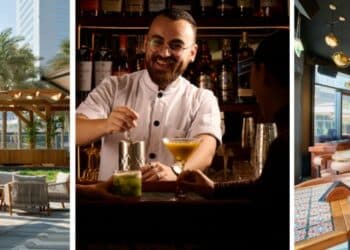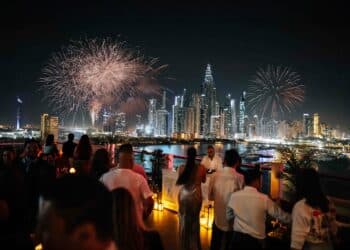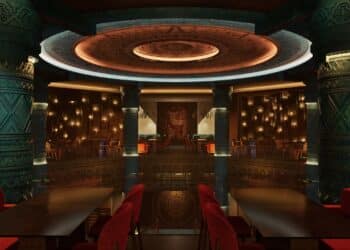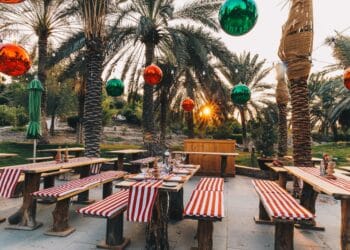From cold brew to pour-over and single-origin beans, Catering News explores the latest coffee trends in the Middle East.

While coffee has always been an important part of Middle Eastern culture, the region is currently experiencing unprecedented growth in the volume consumed. According to Euromonitor, on-trade volume of coffee sales increased by 6% in 2016 and is expected to remain at this growth rate in 2017. A recorded 2.3 billion tonnes in 2017 is set to reach 3 billion tonnes by 2021, representing a total volume CAGR of 6% over the forecast period 2016 – 2021. In line with this growth in consumption, consumers are becoming more sophisticated when it comes to seeking out the best coffee experiences, and are taking an interest in everything from barista training to the latest beans and brewing gadgets.
One of the most prominent trends in the coffee landscape in the Middle East at the moment is cold brew, a beverage produced by steeping coffee grounds in water at cool temperatures for an extended period, usually 12 hours or more. This can also be charged with nitrogen to produce nitro cold brew coffee, which has a creamy texture and a head.
Robert Jones, managing director of Coffee Planet said: “One of the most notable trends aside from specialty-grade coffee is the increased demand for freshly-roasted as well as cold brew and nitro coffees. This is great for us as we roast and pack our own coffee in Dubai, which allows us to quickly adapt to any coffee needs. Cold brew is suited to specialty coffee as it emphasises the delicate nuances and aromas of the bean and we expect to see this type of coffee continue to grow in popularity.”
When creating cold brew coffee, room-temperature or chilled water is used to steep the coffee grounds and once they have been filtered out of the water, a coffee concentrate is left over, which can be diluted with water or milk. Cold brew can also be made using a slow-drip method, whereby water is dripped through coffee beans over several hours. Cold brew is known for having lower acidity than hot coffee.
“Cold brew has exploded in popularity in 2017. Unlike other types of coffee, cold brew takes time to make as it requires soaking the special coffee beans in water for more than 12 hours” – Eman Al Owais, founder, Jolie Floral Boutique Café
Rashid Bahar, business development manager at TSSC, which recently installed cold brew taps in the newly opened Flow café at Jumeirah Emirates Towers, commented: “The cold brew tap offers nitro coffee, a cold brew coffee infused with nitrogen. Nitrogen does not easily dissolve in water, making the beverage creamier and richer than hot coffee. Cold brew must be treated differently to hot coffee as it takes longer to make and has a higher caffeine content due to steeping time. We recommend 14 – 16 hours in a refrigerator with a special cold brewer.”
Jolie Floral Boutique Café, which opened its doors earlier this year and specialises in floral-infused coffees, offers three types of cold brew – Irish, almond cinnamon and Arabic. “Cold brew has exploded in popularity in 2017,” said Eman Al Owais, the café’s founder. “Unlike other types of coffee, cold brew takes time to make as it requires soaking the special coffee beans in water for more than 12 hours.”

Another trend Al Owais highlights is that consumers are becoming increasingly aware of the origins of coffee. Many consumers are now looking for single-origin beans, grown within one geographical region, or even micro-lot coffee, a specific single-origin coffee from a single field on a farm, a small range of altitude and a specific day of harvest. “A number of independent coffee merchants are shifting their focus to the quality of the coffee instead of the amount of coffee they serve. The demand for single origin and micro-lot is increasing,” she said.
Bahar from TSSC agreed, adding: “People are coming to know more about the origin of the beans. They are trying to decipher their own favourite flavour from different origins and so we need to be able to propose to guests what they might like. People are also starting to care more about the environment and you can see that on beans from Rainforest Alliance Certified farms.”
“People are coming to know more about the origin of the beans. They are trying to decipher their own favourite flavour from different origins and so we need to be able to propose to guests what they might like” – Rashid Bahar, business development manager, TSSC
Coffee Planet is one company adapting to the trend for single origin coffee, and currently offers single origin 100% Arabica specialty beans, each with their own tasting note. A popular choice is the Nicaragua El Bosque single origin beans, which provide a combination of milk chocolate and roasted almond aromas complemented by a melted butter and crème caramel sweetness.
In addition to the beans, customers are turning their attention to new coffee brewing gadgets. Tony Billingham, Boncafe group executive director highlights the siphon coffee brewer, which uses a heat source to create a vacuum in one chamber by forcing water up into another chamber where the coffee grounds are steeped. The brew then drains back down to the bottom chamber. “Siphon coffee brewers is one of the trends on the market – brewing coffee from elegant glass chambers using a stunning vacuum process,” he comments.

For Al Owais of Jolie Floral Boutique Café, another trend is pour-over coffee. “Elevating the coffee experience to the next level, Jolie offers Chemex coffee,” she comments. “The Chemex coffee maker is a manual, pour-over style glass container coffee maker, which is perfect for all specialty coffee lovers. Everything is made by hand with a paper filter, which reduces the coffee oils and results in a better tasting coffee.”
Another alternative brewing technique on the rise is a cold drip coffee maker, according to Jones of Coffee Planet. “The cold drip gadget uses a metal valve to control the drip. The coffee flows through the stainless-steel filter resulting in a clean, rich brew. Exploring brewing gadgets creates new ways to enjoy specialty coffee as it emphasises distinctions in taste from gadget to gadget. We expect to see these alternative brewing methods continue to grow in popularity,” he comments.
For coffee enthusiasts today, having picture-perfect coffee is another priority, which is why Jolie Café focuses on creating Instagram-ready drinks. “Everyone is after that unmatched experience they can post on social media,” comments Al Owais. “Our baristas make sure that every coffee they serve is Instagram-worthy and for that special Jolie touch, we add a stem of a rose, carnation or tulip.” Latte art and ‘selfie drinks’ are other presentation trends pointed out by Arnd Springer, managing partner at Jackson Vending Dallmayr who says these are set to launch at the company’s Blue Beach Café on Dubai’s Kite Beach this year.
As the coffee market continues to grow and mature in the Middle East, it is important for F&B outlets to explore the latest trends, but also focus on the basics – quality beans, excellent machines and outstanding baristas.
Al Owais concludes: “The coffee industry is evolving into a science of crafting the perfect cup of coffee, time and time again. This science requires synergy, from the origins of the coffee beans and how they are roasted, all the way up to the experience of your barista.”


































































